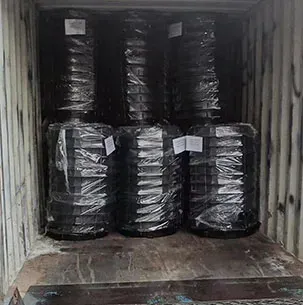Fiber Reinforced Plastic Chequered Plate for Enhanced Durability and Versatility
Understanding FRP Chequered Plates Properties, Applications, and Benefits
In recent years, the demand for innovative materials in various industries has led to the emergence of Fiber Reinforced Polymer (FRP) chequered plates. These plates are increasingly being utilized for their unique properties and advantages over traditional materials such as steel and aluminum. This article aims to explore the characteristics, applications, and benefits of FRP chequered plates.
What is FRP?
Fiber Reinforced Polymer (FRP) is a composite material made of a polymer matrix reinforced with fibers. The fibers, which can be made from glass, carbon, or aramid, contribute to the material's strength, while the polymer provides durability and resistance to environmental factors. This combination makes FRP an ideal choice for various applications where conventional materials may fail.
Properties of FRP Chequered Plates
FRP chequered plates feature a raised surface pattern, typically in a diamond shape, which provides excellent slip resistance
. The following are some notable properties of FRP chequered plates1. Lightweight FRP chequered plates are significantly lighter than their metal counterparts, making them easier to handle and install. This lightweight characteristic reduces transportation costs and labor requirements.
2. Corrosion Resistance Unlike steel and aluminum, which are prone to rust and corrosion, FRP is inherently resistant to chemical attacks. This property makes FRP chequered plates suitable for use in corrosive environments like chemical plants, waste treatment facilities, and marine applications.
3. Strength and Durability FRP offers high tensile strength and impact resistance, making it an excellent choice for heavy-duty applications. The durability of FRP plates ensures that they can withstand extreme weather conditions and heavy loads without compromising structural integrity.
4. Non-Conductive FRP is an electrical insulator, making it safe for use in electrical installations and environments where electrical hazards are a concern.
frp chequered plate

5. Low Maintenance The non-corrosive nature and durability of FRP chequered plates result in lower maintenance costs. Unlike metal plates that require regular maintenance and repainting, FRP plates can last for decades with minimal upkeep.
Applications of FRP Chequered Plates
Due to their unique properties, FRP chequered plates are used across various industries
1. Construction In the construction sector, FRP chequered plates serve as flooring solutions in industrial facilities, warehouses, and pedestrian walkways. Their slip-resistant surface minimizes the risk of accidents.
2. Transportation FRP chequered plates find applications in railway systems, where they are used for platform surfaces and steps due to their lightweight and non-conductive attributes.
3. Marine The marine industry utilizes FRP chequered plates in boat building and for creating slip-resistant surfaces on docks and piers, where exposure to water and salt can accelerate corrosion.
4. Chemical Processing The chemical industry benefits from the corrosion-resistant properties of FRP plates, making them ideal for flooring and walkways in environments prone to chemical spills.
5. Entertainment Venues In stadiums and arenas, FRP chequered plates are used for platforms, staging, and walkways. Their lightweight nature allows for easy installation and repositioning when necessary.
Conclusion
FRP chequered plates offer a compelling alternative to traditional materials in various applications due to their lightweight, corrosion-resistant, and durable nature. As industries continue to seek innovative solutions for efficiency and safety, FRP chequered plates are poised to play a significant role in future developments. Their versatility and strong performance in diverse environments highlight the importance of considering FRP as a prime candidate in material selection, paving the way for enhanced safety and longevity in infrastructure and industry-related projects.
-
The Smarter Choice for Pedestrian AreasNewsJun.30,2025
-
The Gold Standard in Round Drain CoversNewsJun.30,2025
-
The Gold Standard in Manhole Cover SystemsNewsJun.30,2025
-
Superior Drainage Solutions with Premium Gully GratesNewsJun.30,2025
-
Superior Drainage Solutions for Global InfrastructureNewsJun.30,2025
-
Square Manhole Solutions for Modern InfrastructureNewsJun.30,2025
-
Premium Manhole Covers for Modern InfrastructureNewsJun.30,2025
